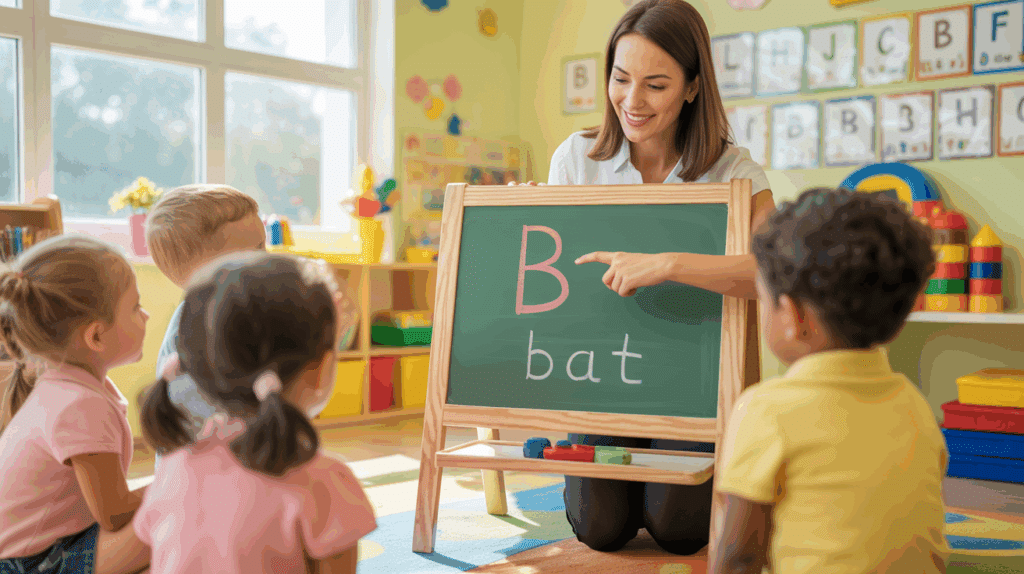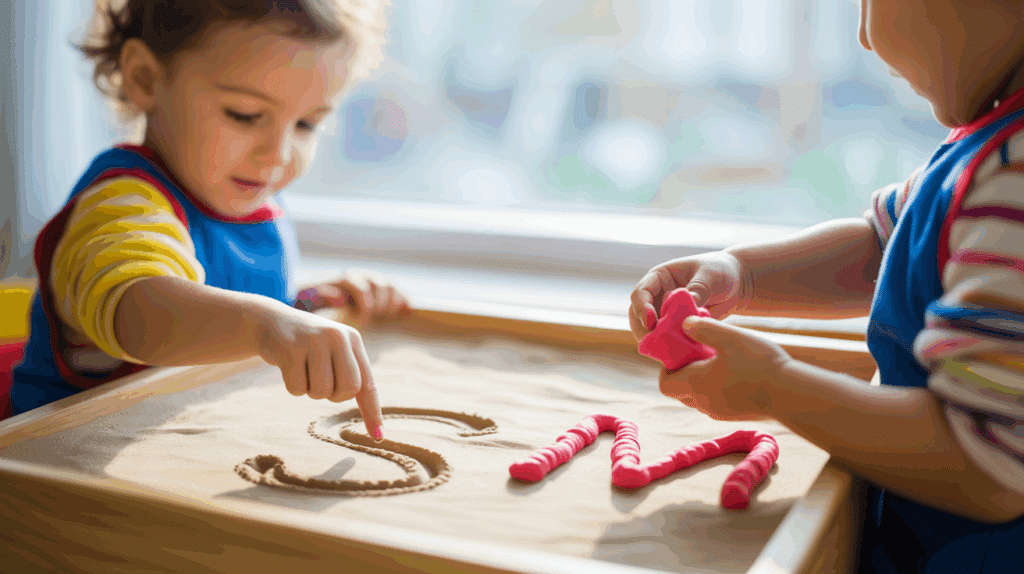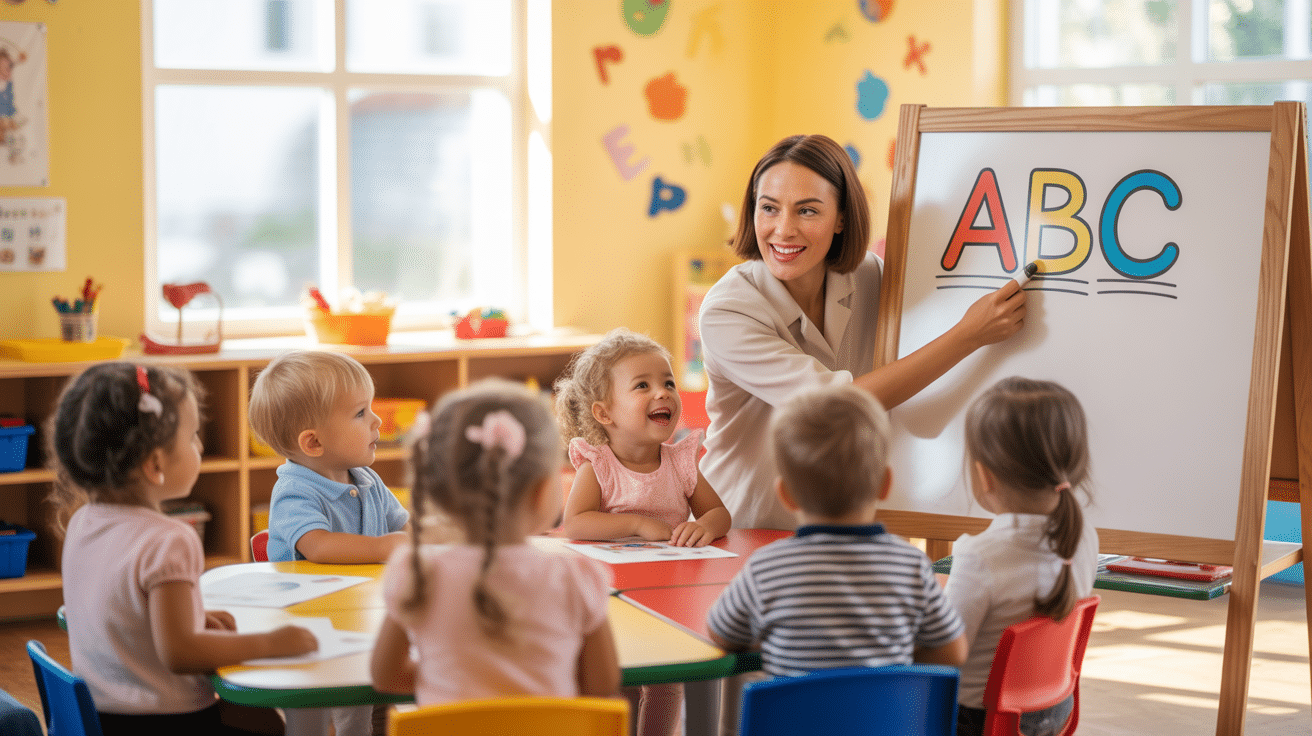Learning to read starts with something small, like knowing letters and their sounds. This early skill, known as alphabetic knowledge, enables children to connect spoken words with printed ones.
As kids grow, they begin to notice letters in books, signs, and even their names. With steady practice, they move from recognizing letters to sounding out full words.
This blog shares what alphabetic knowledge means, why it matters, and how to teach it in fun, meaningful ways.
You’ll also find easy ways to track progress and support different learning needs at every step.
What is Alphabetic Knowledge?

Alphabetic knowledge means understanding the names, shapes, and sounds of letters. It helps children recognize letters, match them to spoken sounds, and use this skill to begin reading and writing.
Key Parts of Alphabetic Knowledge
Alphabetic knowledge has several important pieces. Children first learn to recognize letters by shape and form.
Then, they start naming letters, both in uppercase and lowercase. They also learn to match letters with their sounds, like “B” for /b/.
Last, they understand alphabetic order, such as knowing “A” comes before “B.” Each part helps build a strong base for reading skills later on.
Why Alphabetic Knowledge Matters
Alphabetic knowledge is one of the first steps in learning to read and write. It helps children connect spoken sounds to written letters.
This early skill lays a strong foundation for reading fluency, spelling, and other areas of literacy growth. Without it, children may struggle to read and write words correctly.
Alphabetic knowledge supports:
- Reading fluency by helping children decode and sound out words.
- Spelling and writing through understanding of sound-letter matches.
- Overall literacy by boosting phonemic awareness and comprehension.
Understanding the Alphabetic Principle
The alphabetic principle states that letters and letter groups represent spoken sounds. This principle helps children connect what they hear to what they see in print.
This understanding is key for reading new words and spelling them. While it builds on alphabetic knowledge, it focuses more on how letters and sounds work together.
What It Means
The alphabetic principle states that each letter or letter group in a word represents a sound. For example, the word “ship” has three sounds: /sh/, /i/, and /p/.
Each sound is tied to a letter or letter pair. Children use this skill to decode words while reading and to build words while writing.
It teaches them that letters aren’t just symbols—they carry meaning through sound.
Why It’s Different From Alphabetic Knowledge
Here’s a simple breakdown to help you understand the difference between alphabetic knowledge and the alphabetic principle.
| Concept | Definition | Example | Order |
|---|---|---|---|
| Alphabetic Knowledge | Knowing the names, shapes, and sometimes sounds of letters. | Recognizing the letter “B” and its sound. | Comes first |
| Alphabetic Principle | Understanding how letters and sounds work together in real words. | Using “B” to read or write the word bat. | Comes after alphabetic knowledge |
This progression builds the foundation for strong reading and spelling skills. Understanding both stages helps tailor lessons for early literacy success.
Fun & Effective Ways to Teach Alphabetic Knowledge
Learning letters can be playful, engaging, and meaningful when taught using a mix of everyday routines, hands-on games, and simple tools. Below are some practical approaches that help children build strong alphabet skills while keeping learning joyful.
Play-Based Strategies

Play is one of the most natural and effective ways for children to learn the alphabet. Through songs, games, and hands-on play, kids can develop letter recognition and sound matching skills without feeling pressured.
- Sing songs like the ABC song or use tunes that emphasize individual letter sounds.
- Play letter-matching games using cards, puzzles, or memory flips.
- Set up letter scavenger hunts or use magnetic letters for free play.
- Try alphabet crafts where children decorate one letter at a time to connect form and sound.
These playful activities hold attention and support memory, making learning both fun and meaningful.
Daily Routines

Incorporating letter learning into daily activities helps children see letters as part of their world. Short, regular routines can build familiarity and confidence over time.
- Start the day with a “letter of the day” during circle time or morning announcements.
- Read aloud from books that repeat target letters and sounds.
- Encourage journal time where kids draw or write using featured letters.
- Use classroom signs, cubbies, and charts to display letters in context.
These routines offer repeated exposure in a stress-free way and help build a habit of recognizing letters in everyday life.
Tech & Sensory Tools

Technology and sensory play can both enhance alphabetic knowledge when used in short, focused sessions.
- Use alphabet apps that allow tracing letters, hearing letter names, or selecting correct matches.
- Show brief learning videos that repeat letters and sounds through music and visuals.
- Create sensory stations with letter trays filled with sand, rice, or foam for tracing.
- Let kids build letters with play-dough or feel tactile letters made from fabric, felt, or sandpaper.
These tools support various learning styles (especially for active, visual, or tactile learners) and help reinforce letter-sound connections in memorable ways.
Instructions for Diverse Learners
Some children may need more support to build alphabetic knowledge, especially those with disabilities or speech delays.
It’s important to create a learning space that allows for slower pacing, extra practice, and different ways to understand letters and sounds. Here are some helpful strategies to support them:
- Use clear visuals like letter cards, posters, or storybooks with bold print.
- Provide repeated practice with games, songs, and tracing letters often.
- Break down skills into smaller, manageable steps to reduce overwhelm.
- Give extra time to process and respond without pressure.
- Pair spoken sounds with gestures, pictures, or sign language for clarity.
- Adjust lessons to match each child’s learning style and pace.
These steps help all children feel included and supported. With the right tools and patience, every learner can make progress.
How to Assess Alphabetic Knowledge
Checking a child’s alphabetic knowledge helps you see how well they understand letters and sounds. It shows what they’ve learned and where they might need help.
Teachers and caregivers can use simple tools like checklists, short tests, and tracking sheets to measure growth over time clearly and stress-free.
Observation Checklists
These tools let teachers quietly track student progress during daily routines. They’re flexible, low-pressure, and easy to use across settings.
- Track letter naming, sound matching, and beginning sound recognition.
- Use during small groups, play centers, or one-on-one moments.
- Spot learning gaps without interrupting classroom flow.
- Support teaching decisions with real-time, simple notes.
Checklists help teachers notice progress over time. They are especially useful with younger children or those who need gentle support.
Diagnostic Tools
These structured tools provide deeper insight into what children know. They are useful for setting goals and tracking growth.
- Use flashcards to assess letter names and sounds.
- Try printable worksheets with letter-sound tasks.
- Record scores in a tracking grid to spot trends.
- Repeat regularly to measure growth over weeks or months.
These tools give a clear, structured view of each child’s skills. They’re helpful when planning next steps for small groups or individuals.
Summing Up
Building strong alphabetic knowledge lays the groundwork for everything that follows in reading and writing. It helps children recognize letters, connect sounds, and grow into confident learners.
Even simple activities, done consistently, can lead to real growth. With the right support, every child can move forward at their own pace.
If you found this guide helpful, check out our other early learning blogs for more easy-to-use tips, activity ideas, and practical tools for literacy success.




